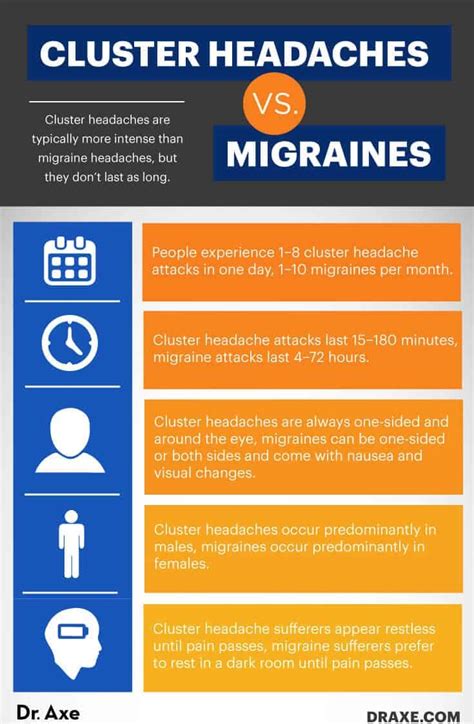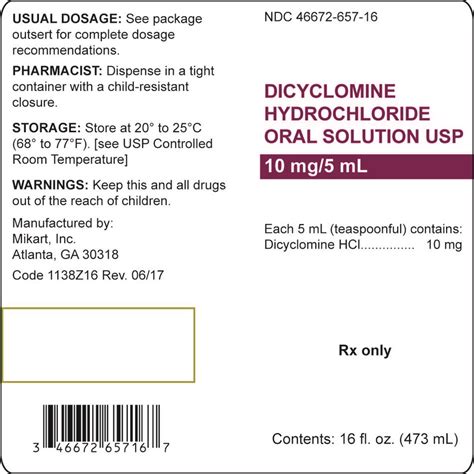Cluster headaches are a type of headache disorder characterized by severe, debilitating headaches that occur in cyclical patterns or clusters. These headaches are extremely painful and can be accompanied by other symptoms such as nasal congestion, rhinorrhea (runny nose), and ptosis (drooping eyelid). The management of cluster headaches often requires a multi-faceted approach, including lifestyle modifications, behavioral interventions, and pharmacological treatments.
Pathophysiology and Clinical Presentation
Understanding the pathophysiology of cluster headaches is crucial for developing effective treatment strategies. Although the exact mechanisms behind cluster headaches are not fully understood, it is believed that they involve abnormalities in the hypothalamic region of the brain, which plays a significant role in regulating various bodily functions, including sleep-wake cycles and pain modulation. The hypothalamus is thought to be hyperactive during cluster headache episodes, leading to the activation of trigeminal nerves, which are responsible for pain transmission in the face and head.
Cluster headaches are typically characterized by their severity, duration, and frequency. They can occur at any time of the day but often exhibit a circadian pattern, peaking in the early morning or late evening hours. The pain associated with cluster headaches is usually unilateral (one-sided), centered around the eye, and can radiate to other areas of the face. The intensity of the pain can be excruciating, prompting sufferers to pace back and forth or engage in other restless behaviors in an attempt to alleviate their discomfort.
Treatment Options
The treatment of cluster headaches can be divided into acute (abortive) and preventive (prophylactic) therapies. Acute treatments are aimed at relieving the pain and associated symptoms of an ongoing headache episode, while preventive treatments focus on reducing the frequency and severity of future episodes.
Acute Treatments
- Oxygen Therapy: Inhalation of 100% oxygen at the onset of a headache, via a face mask, is a well-established acute treatment for cluster headaches. The exact mechanism by which oxygen alleviates pain is not fully understood, but it is thought to involve the inhibition of pain pathways in the brain.
- Triptans: These are a class of drugs specifically designed to target serotonin receptors in the brain, which play a role in pain modulation. Triptans, such as sumatriptan, can be administered orally, intranasally, or through injection, and are effective in aborting cluster headache episodes.
- Lidocaine: Intranasal application of lidocaine can provide quick relief from cluster headache pain by blocking the pain pathways through the sphenopalatine ganglion, a nerve bundle involved in the transmission of pain signals.
Preventive Treatments
- Verapamil: A calcium channel blocker, verapamil is often considered the first-line preventive treatment for cluster headaches. It works by reducing the frequency and severity of headache episodes, although its exact mechanism in cluster headache prophylaxis is not well understood.
- Corticosteroids: Short-term use of corticosteroids, such as prednisone, can be effective in breaking a cluster cycle by reducing inflammation and suppressing the immune system’s contribution to headache pathogenesis.
- Lithium: Primarily used in the treatment of bipolar disorder, lithium has been found to be effective in preventing cluster headache episodes, particularly in patients with chronic cluster headaches. Its mechanism in this context is thought to involve the modulation of neurotransmitter systems.
Emerging Treatments and Considerations
In addition to conventional pharmacological treatments, several emerging therapies are being explored for the management of cluster headaches, including:
- Neurostimulation Techniques: Such as occipital nerve stimulation and sphenopalatine ganglion stimulation, which involve the use of implanted devices to deliver electrical impulses to specific nerves involved in headache pathogenesis.
- OnabotulinumtoxinA (Botox): While primarily known for its cosmetic applications, Botox has been investigated for its potential in treating various headache disorders, including cluster headaches, by inhibiting the release of pain-producing neurotransmitters.
Lifestyle and Behavioral Modifications
While pharmacological interventions form the backbone of cluster headache management, lifestyle and behavioral modifications can play a crucial role in reducing the frequency and severity of episodes. These include:
- Maintaining a Regular Sleep Schedule: Irregular sleep patterns can trigger cluster headache episodes.
- Avoiding Triggers: Identification and avoidance of personal triggers, such as certain foods, alcohol, or stress, can help in preventing headache episodes.
- Staying Hydrated: Adequate hydration is essential for overall health and may help in reducing headache frequency.
Conclusion
Cluster headaches are complex and challenging to manage, requiring a comprehensive approach that incorporates both pharmacological treatments and lifestyle modifications. The selection of appropriate treatments should be tailored to the individual’s needs, considering the severity of their condition, the presence of any comorbidities, and their personal preferences. As research continues to unveil the mysteries of cluster headache pathophysiology, new and innovative treatments are being developed, offering hope for improved management and quality of life for those affected by this debilitating condition.
FAQs
What are the most effective treatments for acute cluster headaches?
+Oxygen therapy and triptans are among the most effective treatments for acute cluster headaches, providing quick relief from pain and associated symptoms.
How do preventive medications help in managing cluster headaches?
+Preventive medications, such as verapamil and corticosteroids, help in reducing the frequency and severity of cluster headache episodes, providing long-term management and relief.
Can lifestyle modifications alone manage cluster headaches?
+While lifestyle modifications, such as maintaining a regular sleep schedule and avoiding triggers, can help in reducing the frequency of cluster headaches, they are often used in conjunction with pharmacological treatments for comprehensive management.
What are some emerging treatments for cluster headaches?
+Emerging treatments include neurostimulation techniques and the use of onabotulinumtoxinA (Botox), which are being explored for their potential in preventing cluster headache episodes and reducing pain.
Further Reading and Resources
For individuals seeking more information on cluster headaches and their management, numerous resources are available, including the American Migraine Foundation, the National Institute of Neurological Disorders and Stroke, and various patient support groups. These resources provide valuable insights into the latest research, treatment options, and personal stories of living with cluster headaches, serving as a comprehensive guide for both patients and healthcare professionals navigating the complexities of this condition.



